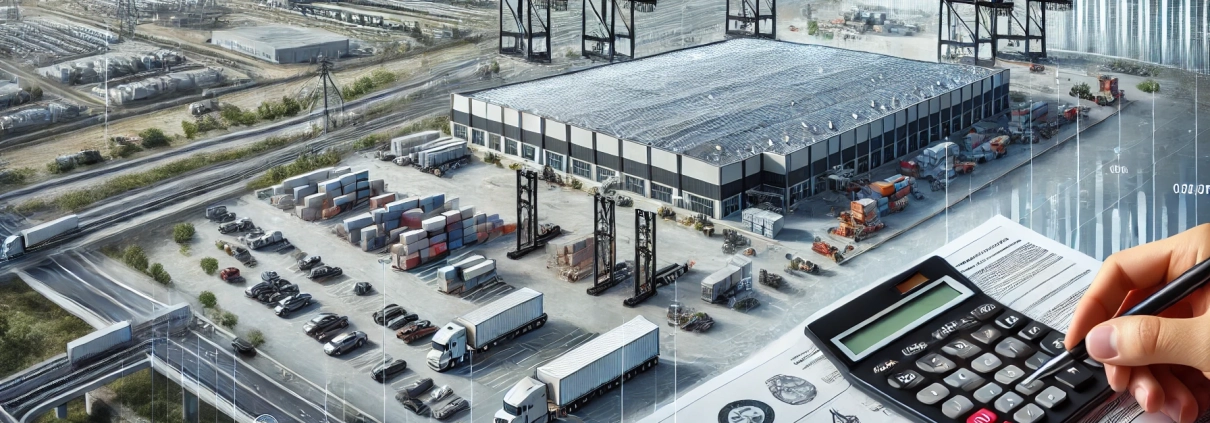Interest Reserve
A reserve account held by the lender of a construction loan and used by the borrower to cover loan interest shortfalls during construction and lease-up. The interest reserve is funded via the initial proceeds from the construction loan and is calculated based either on expected future draws or by means of a simple average estimate of the outstanding loan balance throughout the loan period.
Putting “Interest Reserve” in Context
Summit Logistics Development, a prominent industrial real estate developer, is constructing NorthPoint Logistics Center, a 500,000-square-foot warehouse and fulfillment facility in the Inland Empire, California. As a logistics hub with proximity to major ports and transportation networks, the Inland Empire is an ideal location for this state-of-the-art project.
To finance the development, Summit secured a $35 million construction loan from a commercial lender. A key component of the loan is a $3.48 million interest reserve, designed to cover interest payments during the construction and lease-up phases of the project.
Why an Interest Reserve is Critical
The development timeline includes:
- Construction Period: 14 months
- Lease-Up Period: 10 months
During these 24 months, the property will not generate full rental income. Without an interest reserve, Summit would need to inject additional equity to meet debt service requirements. The interest reserve ensures that interest payments are covered, allowing Summit to focus on timely project delivery and tenant acquisition.
Detailed Calculation of the Interest Reserve
Unlike a simplified average loan balance calculation, this interest reserve was based on a detailed draw schedule and month-by-month interest accruals:
Draw Schedule
The loan is disbursed incrementally over the 14-month construction period, with a monthly draw of approximately $2.5 million. The remaining 10 months reflect the full loan balance as the project stabilizes during lease-up.
Here’s a summary of the cumulative loan balance and monthly interest calculations for select months:
| Month | Cumulative Loan Balance ($) | Monthly Interest ($) |
|---|---|---|
| 1 | 2,500,000 | 13,541.67 |
| 3 | 7,500,000 | 40,625.00 |
| 6 | 15,000,000 | 81,250.00 |
| 9 | 25,000,000 | 135,416.67 |
| 14 | 35,000,000 | 189,583.33 |
| 15-24 | 35,000,000 | 189,583.33 (each) |
Total Interest Reserve
The total monthly interest over 24 months was summed to $3,317,708.33. A contingency buffer of 5% was applied to account for potential delays or unexpected costs, resulting in an adjusted interest reserve of $3,483,593.75.
Income Considerations During Lease-Up
Although the property won’t reach full stabilization until the end of the lease-up period, Summit has implemented an aggressive pre-leasing strategy. Pre-committed tenants may begin paying rent during the lease-up phase, which could reduce reliance on the interest reserve for the final months.
Risks and Mitigation Strategies
The interest reserve mitigates several key risks:
- Construction Delays: A contingency buffer ensures adequate funds for extended timelines.
- Market Dynamics: High demand and low vacancy rates in the Inland Empire reduce leasing risks.
- Cost Overruns: Summit has allocated additional equity to cover unexpected expenses, preserving the integrity of the loan’s interest reserve.
Loan Transition and Developer Benefits
Upon stabilization, Summit plans to refinance into a $40 million permanent loan at a lower interest rate of 5.5%. The stabilized cap rate of the project is projected to be 6.8%, yielding strong returns on development costs and enhancing investor confidence.
Conclusion
By structuring a well-calculated interest reserve, Summit Logistics Development ensures that NorthPoint Logistics Center remains financially secure during construction and lease-up. This thoughtful planning not only protects the lender but also provides Summit with the flexibility to focus on delivering a premier industrial facility in a competitive logistics market.
Frequently Asked Questions about Interest Reserves in Construction Financing
Click here to get this CRE Glossary in an eBook (PDF) format.

